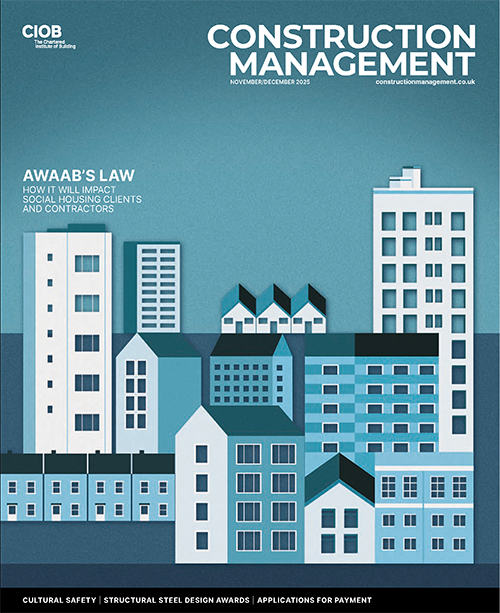
New regulations now force qualifying companies to report on various aspects of how they deal with retentions. Michelle Essen and James Cooper explain.
From 1 March 2025 new laws require certain companies to report on the retentions they hold and on their retention practices.
While reporting on payment performance and practices has been required since 2017, the regulations have been extended, bringing construction contracts under scrutiny.
What was the position before?
Since the Reporting on Payment Practices and Performance Regulations 2017 (the Regulations) have been in force since 2017, organisations should be familiar with them.
They require qualifying companies to report on their payment performance and practices with respect to qualifying contracts. (The definitions of ‘qualifying companies’ and ‘qualifying contracts’ in the Regulations are complex, but broadly, it comes down to whether certain thresholds are met under the Companies Act 2006, and whether the contracts have a UK nexus).
Among other things, qualifying companies must report payment information such as:
- a description of their standard payment terms;
- the average number of days taken to pay suppliers;
- the percentage of payments made under 30 days, between 31 to 60 days, or over 60 days;
- the percentage of payments which were not made within the agreed payment timeframe.
Other regulations impose the same obligations on qualifying limited liability partnerships (LLPs).
The Regulations were also amended in 2024, so that qualifying companies must report on additional metrics, including:
- the sum total of payments made under 30 days, between 31 to 60 days, or over 60 days;
- the sum total of payments that were not made within the agreed payment timeframe;
- the percentage of payments not made within agreed payment timeframes because of disputes.
What’s changed in relation to construction contracts?
The Reporting on Payment Practices and Performance (Amendment) Regulations 2025 (the Amendment Regulations) came into force on 1 March 2025, making further changes to the Regulations – this time focusing on construction contracts.
They require qualifying companies to report on various aspects of how they deal with retentions in their ‘qualifying construction contracts’ for financial years on or after 1 April 2025. (‘Construction contracts’ is defined in line with the Housing Grants, Construction and Regeneration Act 1996, and ‘qualifying construction contracts’ are construction contracts that are also ‘qualified contracts’ under the Regulations, having a UK nexus as mentioned above.)
The changes mean qualifying companies must report on whether they use retention clauses in qualifying construction contracts. Where they do, they must also report on:
- whether they use retention clauses in all their qualifying construction contracts, in their standard terms, or only in specific circumstances (and what those circumstances are);
- a statement on whether there is:
- a set contract sum under which no retention clause is used (and what it is)
- a standard percentage rate it uses in retention clauses (and what it is)
- a practice to ensure that any retention clause used with subcontractors is no more onerous than the retention clause used by the client in the same supply chain (and a description of that practice);
- a description of the process for releasing the retention (and if this occurs in stages, what those stages are);
- the value of money retained by the qualifying company from its suppliers by way of retention, expressed as a percentage of the money retained by the qualifying company’s clients by way of retention (a formula is provided);
- the value of money retained by the qualifying company from its suppliers by way of retention, expressed as a percentage of the money paid by the qualifying company to its suppliers under all qualifying construction contracts (a formula is provided).
The director of the qualifying company who has approved the information reported must be named. These changes also apply to LLPs (with a designated member being named, instead of a director).
When to report and what if you don’t
There are typically two reporting periods during each qualifying company’s financial year, and reports must be submitted within 30 days from the end of the relevant period.
Failure to publish a report is an offence by the qualifying company and also every director. It’s also an offence for a person to knowingly or recklessly publish a report that is misleading, false or deceptive.
In either case, “a person guilty of an offence under this regulation is liable on summary conviction… to a fine”.
What does this mean for the construction industry?
Businesses in the construction industry should carefully consider what they need to do to comply, including:
- determining whether they are a qualifying company with qualifying construction contracts, and understanding what reporting they currently do under the Regulations;
- reviewing their contracts and compiling data so they can submit full reports on time;
- understanding how they use retentions, including in subcontracts;
- updating their internal processes and policies as necessary (including their reporting systems);
- training their staff and working with supply chains as necessary.
While the Amendment Regulations will increase the administrative burden for construction businesses, given the potential sanctions and reputational damage for non-compliance, it is important that all qualifying companies and LLPs comply.
It remains to be seen how the government will use this information and what its next steps, if any, around retentions may be.
Michelle Essen is a legal director in the construction and engineering team and James Cooper is an associate in the commercial technology team at Womble Bond Dickinson.











